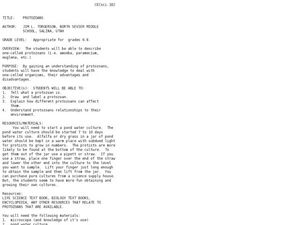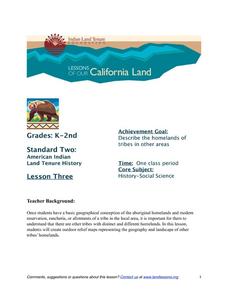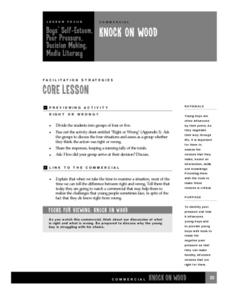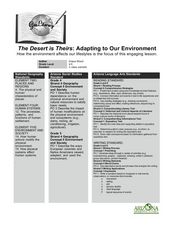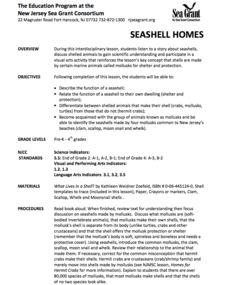Curated OER
Protozoans
Students examine protozoans and their advantages and disadvantages. In this chemistry lesson students explain what a protozoan is then draw and label one.
Global Oneness Project
Exploring the Creative Process
Launch a discussion of the creative process with a short video that features the daily ritual of Slobodan Dan Paich, a San Francisco artist. Slobodan models his approach to tea painting and shares his reflections on the...
McGraw Hill
Study Guide for Frankenstein
Help the class uncover the story of Frankenstein. Learners answer questions and complete activities to respond to the text Frankenstein as they read. Scholars learn new vocabulary, respond to personal and text-dependent questions,...
Reed Novel Studies
Flush: Novel Study
Standing up for beliefs sometimes leads to trouble! The father in Flush takes knows this all too well when he sinks a boat in protest to its illegal dumping. With his dad behind bars, the son, Noah, takes matters into his hands by...
Indian Land Tenure Foundation
More Tribal Homelands
Here is a very fun idea that introduces young learners to how geographical location affects cultural development. They are introduced to four areas where Native Americans have lived in the past by reading stories and examining images....
Curated OER
Atoms and Their Interactions
In this atoms worksheet, students will review the characteristics of elements, atoms, and isotopes. Then students will compare the difference between ionic and covalent bonds. Finally, students will balance a chemical equation. This...
Curated OER
Sponges, Cnidarians, Flatworms, and Roundworms
For this simple animals worksheet, learners review the characteristics of sponges, cnidarians, flatworms, and roundworms. This worksheet has 12 matching questions.
Curated OER
Knock On Wood
Students investigate the trees of the Mississippi Valley, specifically looking at the coniferous and deciduous forests. The research of the area is part of a field study when students conduct a survey of local forests in order to create...
Curated OER
ATP in a Molecule
For this cell energy worksheet, students review how ATP is formed and broken down and the uses of cell energy. This worksheet has 8 fill in the blank and 2 short answer questions.
Curated OER
Fossils
In this fossils instructional activity, students review the different types of fossils including index and trace fossils. This instructional activity has 6 matching and 9 true or false questions.
Curated OER
Living in a Watershed
Fourth graders examine watersheds. In this ecosystem lesson, 4th graders discover what a watershed is and identify the local watershed they live in. Students investigate the attributes of a watershed as well.
Curated OER
Arbor Day Vocabulary Quiz
In this Arbor Day vocabulary activity, learners draw lines to match ten words pertaining to trees to their definitions. Some prior knowledge or research is assumed.
Curated OER
Animal Behavior
In this animal behavior worksheet, students will review various types of animal behavior including those that are instinctual and those that are learned. This worksheet has 10 true or false and 8 matching questions.
Curated OER
The Endocrine Systems
In this endocrine system worksheet, students review the structures and functions of the parts that make up the endocrine system. This worksheet has 7 fill in the blank and 6 matching questions.
Curated OER
N, B, and T: Pollutants Three
Learners explore nutrient, bacterial, and toxic surface water pollution. They identify the amount of water they use each day and summarize the kinds of substances that cause water pollution. They predict what will happen in water...
Curated OER
Thinning and Transplanting
Students identify and observe one plant per section in their quad and to transplant the surplus seedlings to empty quads and interpret why this is important. They then discuss the purpose of thinning and transplanting. Finally, students...
Curated OER
"Garden Springs Gardeners"
First graders ponder the question of how plants help their lives. They observe and compare properties of several different plants. Differentiate between living organisms and nonliving objects.
Curated OER
DNA Extraction
Students extract and observe a visible amount of DNA from Escherichia. coli cells. They discuss the properties of DNA. Confirmation of the presence of DNA by a reaction with an indicator is confirmed within this lesson. Many hands-on...
Curated OER
The Desert is Theirs: Adapting to Our Environment
Students determine how animals and people adapt to the desert environment. In this desert lesson, students review vocabulary about the desert and how humans have to make changes to accommodate their environments. They listen to and...
Curated OER
What are Stars?
Students research the solar system and it's characteristics. For this solar system lesson, students are broken into 4 groups, each assigned a specific part of the solar system. Students use the Internet to research their part...
Curated OER
Modeling the Big Bang and the Formation of the Universe
Sixth graders conduct an experiment to understand the Big Bang Theory. In this Big Bang Theory lesson plan, 6th graders will observe a balloon with confetti popping to emulate and analyze information related tot he Big Bang theory....
Curated OER
Seashell Homes
Pupils listen to a story about seashells. They discuss shelled animals. Learners describe the function of seashell. Pupils relate the function of a seashell to their own dwelling. They differentiate between shelled animals that make...
Curated OER
Biome Discovery Expedition
Students research similarities and differences among biomes online. They simulate job of zoo planners, and depart on expedition to decide which biome the city zoo should construct, as well as which plants and animals to include in it.
Curated OER
Algae in the Aquarium
Tenth graders determine the cause of an algal bloom in a classroom aquarium. Students analyze the situation and present a solution to the problem in the given time frame after researching and conducting experiments. Solutions are...
